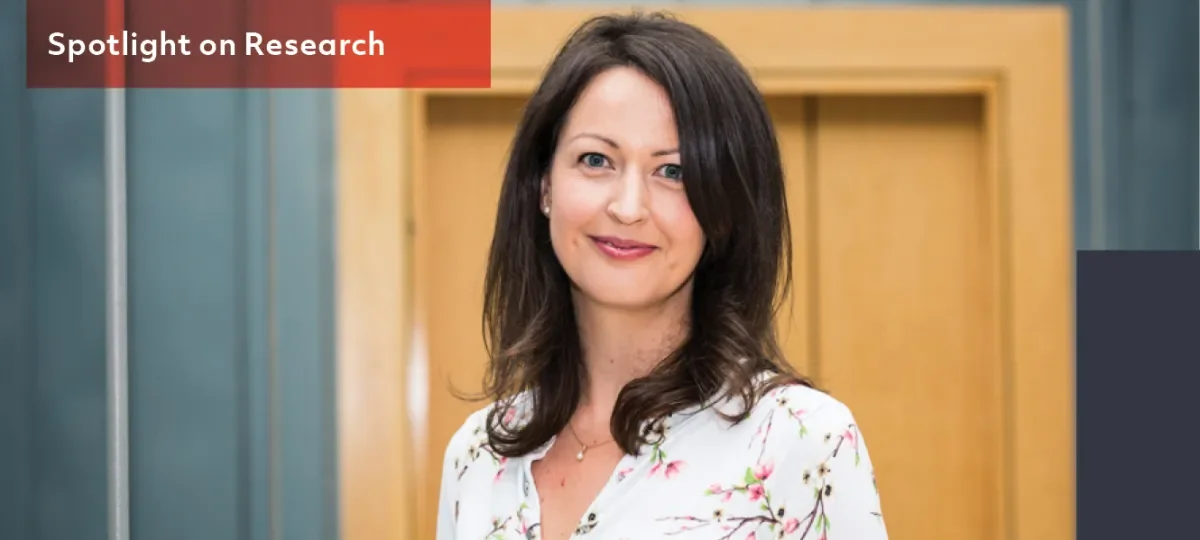

Spotlight on research: Mathematical modelling for better designs and simulations
This week's Spotlight on Research chats to Dr Patricia Moore, Assistant Professor at DCU's School of Electronic Engineering
Your work improves how we can model objects using computers. Why do you look at that?
“I mainly work on 3D modelling and computer simulation. This has all sorts of applications in fields like Computer Graphics and Computer-Aided Design.
Generating physically realistic simulations is very important for convincing computer graphics, but it is also very important in engineering for improving designs. How do you ensure that a car design or a plane design is safe and efficient?”
How does your research contribute?
“Computers have become invaluable in solving complicated engineering problems, but they still have their limitations.
There are always trade-offs and accuracy can be difficult to achieve. I try to make it easier for computers to solve simulation problems as efficiently and accurately as possible.”
How does that work in practice?
“A lot of it is about breaking down the problem.
For example if you wanted to build a computer model of a smooth, curved surface, like the bonnet of a car or the fuselage of a plane or space shuttle, you would typically use simple well-understood shape elements like triangles to build up the computer model of the surface.
The smaller the triangles and the more of them, the better the model. Similarly, complicated equations that describe things like material properties can be broken down into simple well-understood elements.
If you use too few elements to approximate the real model, it can look jagged and/or behave unrealistically. More importantly, you can make poor assumptions and design decisions based on a simulation using a poor model.
My work looks at preserving the smooth geometry of the original design and using as much knowledge of the geometry and material behaviour as possible to improve accuracy and reduce the workload in performing simulations.
My work typically involves solving problems using computer software, but I also find a pen and paper really great for working out some of the problems and analysing approaches too.”
How will your research improve everyday life?
“Computer simulations are used extensively in construction and manufacturing to simulate and test designs before they are built.
Let’s say you are designing an aircraft and you want to test its features for safety, it’s far quicker and cheaper to make a computer model and simulate the stresses of a crash than to put real models through real test crashes!
My research creates more efficient and accurate computer simulation models that are easier and faster to build and run.
One major impact of that is on the design and development of everyday products and structures like cars, planes, and bridges.
With better simulation algorithms, the design process can be improved and we can have designs that are safer, more efficient and less expensive to produce.”
How did you become interested in this area?
“I always liked maths and physics in school, so I chose to study engineering at DCU and in my final year I did a project that involved building a 3D model of a human from 2D photographs.
That got me interested in the area of modelling and visual analysis and I’ve been working on computational modelling ever since!
With the increased computational resources in today’s processors and recent trends in things like 3D printing, it’s a very exciting area to be a part of. ”
How else do you contribute to the field, outside of your direct research?
“I teach a range of engineering subjects in the School of Electronic Engineering. I’m currently working on the international edition of a textbook on the Java computer programming language.
I also like to get involved in mentoring at wonderful initiatives like Girls Hack Ireland and Coolest Projects that encourage young people to take an interest in computers and technology.”
What do you like to do when you are not working in DCU?
“I love to get outdoors surfing or hiking when I can. I was a keen swimmer in school and swam at national level, so I really enjoy being out in the water.
The last surfing and hiking session I did was in Bundoran, Co. Donegal, with a big group of friends, it was lots of fun.
I also enjoy reading, particularly classics like the works of Charles Dickens, Alexandre Dumas and Jane Austen.”
And finally, what are the biggest challenges and rewards that you find in research?
“I think one of the challenging things is that you have to be able to work on your own - even if you are part of a big research team, there will be times when you have to individually dig deep into a research topic.
But that is also a reward, because you are adding to knowledge and getting a really deep understanding of a problem.
I’m lucky too because my work can link in with so many different applications and fields, so I get to work with lots of different research communities.”
